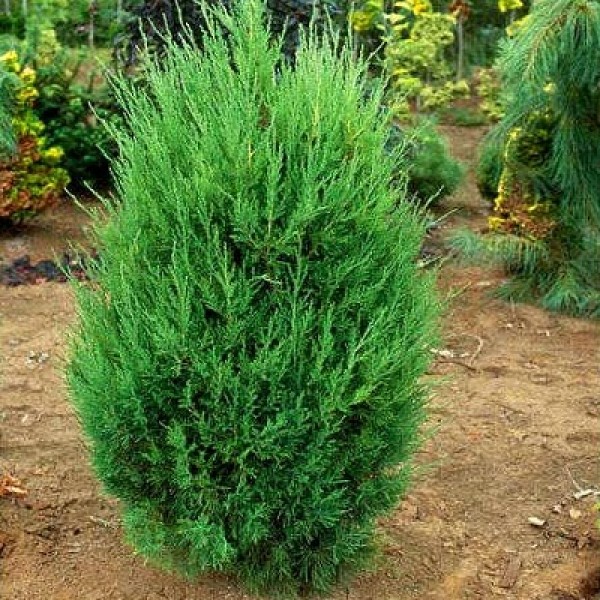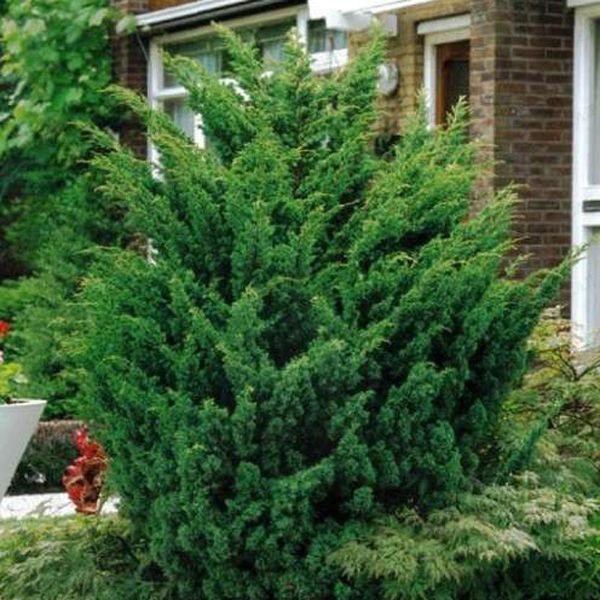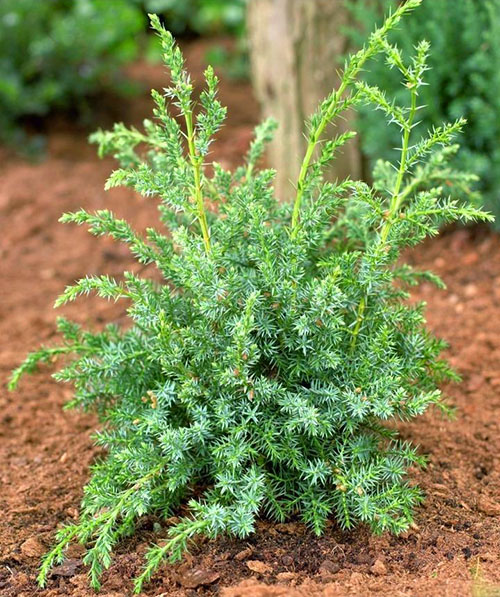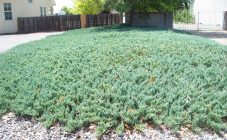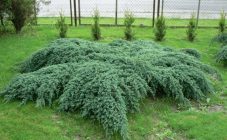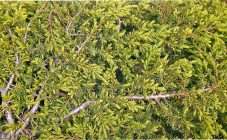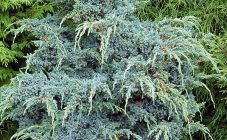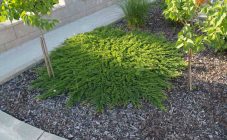Content:
In modern landscape design, Chinese juniper is widely used, due to its excellent decorative features. It is very easy to create various compositions using this plant. Culture is also in demand due to its unpretentiousness and ease of care.
About the plant
The main and main distinguishing characteristic of the Chinese juniper from other representatives of this genus is its low growth (no more than 2 meters), with a crown diameter of about 1 m. The needles are very dense and, depending on the variety, form various forms.
The native land of the plant is North Korea, Japan, northeast China, Manchuria. It belongs to the genus Juniper of the Cypress family. The average life span is about 800 years.
The bark of the Chinese juniper is brown, slightly exfoliated, young shoots are dark green, very thin (do not exceed 2.5 mm in diameter).
Depending on the variety, Chinese juniper can differ in the type of needles (scaly, needle-shaped), as well as in the shape of the cones (elongated, angular, spherical).
Varieties
Flower shops offer a wide variety of varieties of Chinese juniper. Among the most popular are:
- Juniper Strickt. One of the most popular varieties with good frost resistance. Its height does not exceed 2.5 m with a diameter of up to 1.5 m. The needles are colored green with a slight blueness, the crown has the shape of a wide pyramid.
- Juniper Spartan, the description of which should start with the stunning emerald color of the needles, it is very soft to the touch. The Spartan variety of Chinese juniper reaches 2.5 m and has a regular columnar shape.
- Plumosa variety. A more compact plant, not exceeding 1 m in height and width. The needles are colored dark green.
- Variety Expansa Variegat. A low plant up to 30 cm with a spreading crown up to 1 m. Part of the branches spreads along the ground, the other rises up. It has a green color with a blue tint and yellowish areas, randomly located on the surface.
- Juniper Chinese Blauw. A very original plant, as the shape of the crown resembles an inverted cone. The needles are colored bluish with a slight gray tint. The height reaches 1.7 m.
These are only the most interesting and common representatives of this plant, in fact, there are many more of them. How many varieties there are is difficult to list.
Growing
The rules for caring for a juniper are primitive, it needs a little attention, as a result, the garden will be decorated with a beautiful coniferous evergreen plant.
Landing
The best time to plant is the first half of spring or early fall. It is important to plant the plant before the onset of frost.
There are no fundamental requirements for the composition of the soil. The plant thrives in both sandstone and loam. But most of all, juniper prefers a mixture of sand, peat and sod land, taken in a 1: 2: 1 ratio.
First, the hole is prepared. A pit is dug, approximately 70x70 cm, then a drainage layer of 10 cm is laid (expanded clay or crushed stone).
After planting, the root zone is mulched using sawdust or moss. This will help prevent moisture evaporation and rapid weed growth.
Watering and fertilizing
The first days the seedlings are watered abundantly, then watering is reduced to 1 time per month. An adult plant will require 10-30 liters, depending on its size.
Fertilizers are applied once a year in spring. You can use special complex compounds, but ordinary nitrophosphate will be enough.
Pruning and preparing for winter
In the first years, the Chinese juniper grows very slowly, so only a sanitary cutting is required: removal of dry and diseased branches. After the bush reaches its maximum height, you can cut it at your discretion, giving it beautiful shapes, in accordance with the chosen design.
The culture tolerates winter cold well - no special preparation is required. But it is still recommended to cover the young plant. If the winters are too harsh, then it is allowed to cover the near-stem circle with spruce legs.
Diseases and pests
Despite the strong immunity, some diseases can still be encountered during the cultivation process. Rust is considered the most common. Drugs like Arcerida, which are used in a course of 10 days, will help successfully.
Of the pests, the owner can meet aphids, spider mites, juniper shitovka. When the first signs of "uninvited guests" appear (the plant begins to turn yellow or dry), the bushes are treated with insecticides. When processing, it is necessary to spray not only the juniper, but also the nearby plants, since they become breeding grounds for harmful insects, for example, aphids are most often found on a garden rose.
Advantages and disadvantages
Among the main advantages of this plant, it is worth noting:
- frost resistance;
- drought tolerance;
- beautiful decorative appearance;
- low growth;
- excellent survival rates.
As the main disadvantage of this ornamental coniferous plant, poor growth in the first years should be highlighted, then the plant quickly reaches its extreme parameters.
Application in landscape design
The use of juniper in landscape design is very wide. Best of all, "northern cypress" looks in gardens decorated in Scandinavian or English style. In designs designed in Japanese styles or stone compositions, you simply cannot do without juniper. Depending on your imagination, you can use Chinese juniper as a centerpiece or background plant.
A large assortment of varieties that differ in crown shape and color will help you choose the most optimal option for your landscape design option.
As you can see, when decorating a garden or a personal plot, you can use Chinese juniper very beautifully. With its help, it will be possible to create beautiful compositions or arrange garden paths. It is very simple to care for a representative of handsome conifers: even a beginner in landscape design can handle the cultivation.
